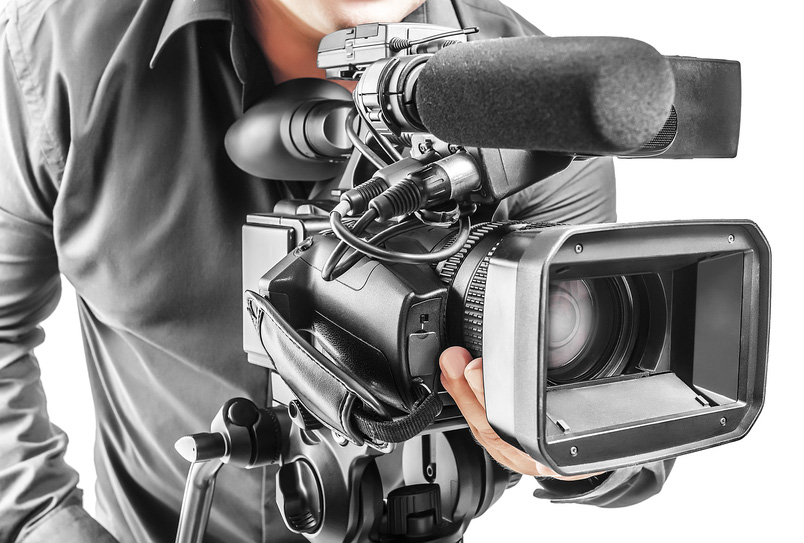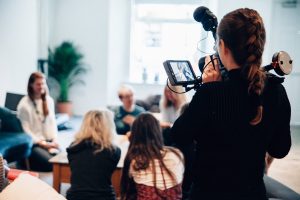Specialized Legal Videography for Attorneys.
Why Legal Videography Is Essential for Accurate Legal Record-Keeping
In the realm of lawful proceedings, the accuracy of record-keeping is extremely important, and legal videography emerges as an essential tool in this context. As we discover the multifaceted benefits of legal videography, one must consider its ramifications for the future of judicial integrity and openness.
Significance of Visual Evidence
Developing the value of visual proof in lawful procedures is critical for guaranteeing accurate record-keeping and improving the general stability of the judicial process. Visual evidence functions as a vital tool in recording events, conditions, and various other essential information that might be crucial to a case. Unlike composed accounts, which are susceptible to interpretation and predisposition, aesthetic recordings give a purpose, unalterable representation of facts as they happened.


This type of evidence can capture a selection of components, including witness habits, environmental context, and physical proof, all of which might affect judicial outcomes. By presenting a clear and detailed aesthetic story, lawful videography eliminates uncertainty and helps to maintain the authenticity of the evidence.
In addition, aesthetic proof can be instrumental in minimizing conflicts over accurate discrepancies, as it enables for a direct contrast against statement and other recorded records. In a period where electronic innovation is increasingly prevalent, the capacity to existing aesthetic evidence effectively can considerably enhance the total quality of legal procedures. Inevitably, the incorporation of visual evidence not only strengthens the documents procedure yet additionally reinforces public count on the judicial system by advertising openness and responsibility.
Enhancing Statement Trustworthiness
The assimilation of legal videography into court room proceedings considerably enhances the reliability of witness statement. By recording the nuances of spoken and non-verbal interaction, video clip recordings supply an even more detailed representation of a witness's attitude, emotions, and integrity. This aesthetic documents allows jurors to observe the witness's body language, face expressions, and overall carriage, which are crucial parts that can influence their assumption of statement reputation.
Furthermore, lawful videography lowers the potential for misconception or distortion of statement that might take place in created records. Customers can see and listen to the testimony as it was offered, making certain that the context and tone are protected. This authenticity cultivates a greater sense of trust fund among jurors, who may be a lot more likely to think testament that they can witness firsthand.
In addition, the presence of video clip footage can hinder witnesses from providing misleading or exaggerated declarations, as they know that their testimony is being taped. This liability strengthens the stability of the judicial process. Eventually, lawful videography functions as a crucial device in making certain that witness testament is not just accurately depicted but additionally seen with enhanced reputation by all parties included.
Comprehensive Record Conservation
Comprehensive document conservation is important for keeping the integrity of legal procedures. Lawful videography acts as an important tool in this process, offering a precise aesthetic and auditory account of statements, depositions, and other turning points in a situation. Unlike conventional written transcripts, video recordings catch the subtleties of body movement, tone, and feeling, which are essential for comprehending the context and intent behind statements made during lawful procedures.

Additionally, the capability to review video clip evidence permits lawful experts to identify vital details that may have been ignored in composed records. By maintaining a comprehensive archive of legal procedures through videography, law Our site practice can maintain the highest requirements of precision and accountability, eventually adding to a fairer judicial procedure.
Enhancing Legal Process
Improving legal procedures is vital for enhancing performance and lowering delays within the judicial system. Legal videography serves as an essential device in achieving this objective by offering clear and accurate visual paperwork of court hearings, depositions, and testimonies. This innovation enables real-time recording, making sure that all verbal and non-verbal signs are captured, which can promote quicker resolution of conflicts.
The combination of videography right into legal procedures minimizes dependence on traditional methods, such as extensive records, which can be time-consuming to generate and assess. By having accessibility to recorded video, lawyers can promptly reference key moments, enhancing their ability to prepare and existing instances efficiently. This immediacy additionally helps in the clearing up of testaments, reducing the potential for false impression.
Additionally, aesthetic documentation promotes a more appealing court room experience for jurors, assisting them to comprehend complex details quicker. Eventually, lawful videography improves interaction amongst all events entailed, from attorneys to courts to jurors, thereby promoting an extra reliable judicial process (legal videography). In an era where time is of the essence, accepting this technology is important for the contemporary legal landscape
Admissibility in Court
Accurate paperwork is important not just for efficiency yet additionally for making certain that proof is admissible in court. Lawful videography functions as an important device in this procedure, supplying a reliable aesthetic document of testaments, declarations, and events. Courts often need evidence to fulfill details requirements of admissibility, including relevance, click for source credibility, and dependability. High-grade video clip recordings can meet these requirements by capturing clear sound and visual details that composed transcripts might neglect.
To be considered admissible, lawful videography has to abide by you can find out more well-known methods, such as appropriate tools usage, ideal lights, and clear sound capture. In addition, it is vital to have qualified videographers that understand the legal requirements surrounding proof collection. The chain of custody must additionally be preserved to protect against any cases of meddling or modification.
In addition, legal videography can enhance the persuasiveness of evidence by supplying jurors with a direct view of the testament, enabling an extra involved understanding of the situation. In recap, the integration of lawful videography into record-keeping not only sustains effectiveness yet likewise reinforces the honesty and admissibility of proof in court process.
Conclusion
In verdict, legal videography plays a crucial duty in ensuring accurate lawful record-keeping by supplying objective visual documentation. Inevitably, the consolidation of legal videography into the judicial procedure promotes openness and strengthens public trust in the stability of the legal system.